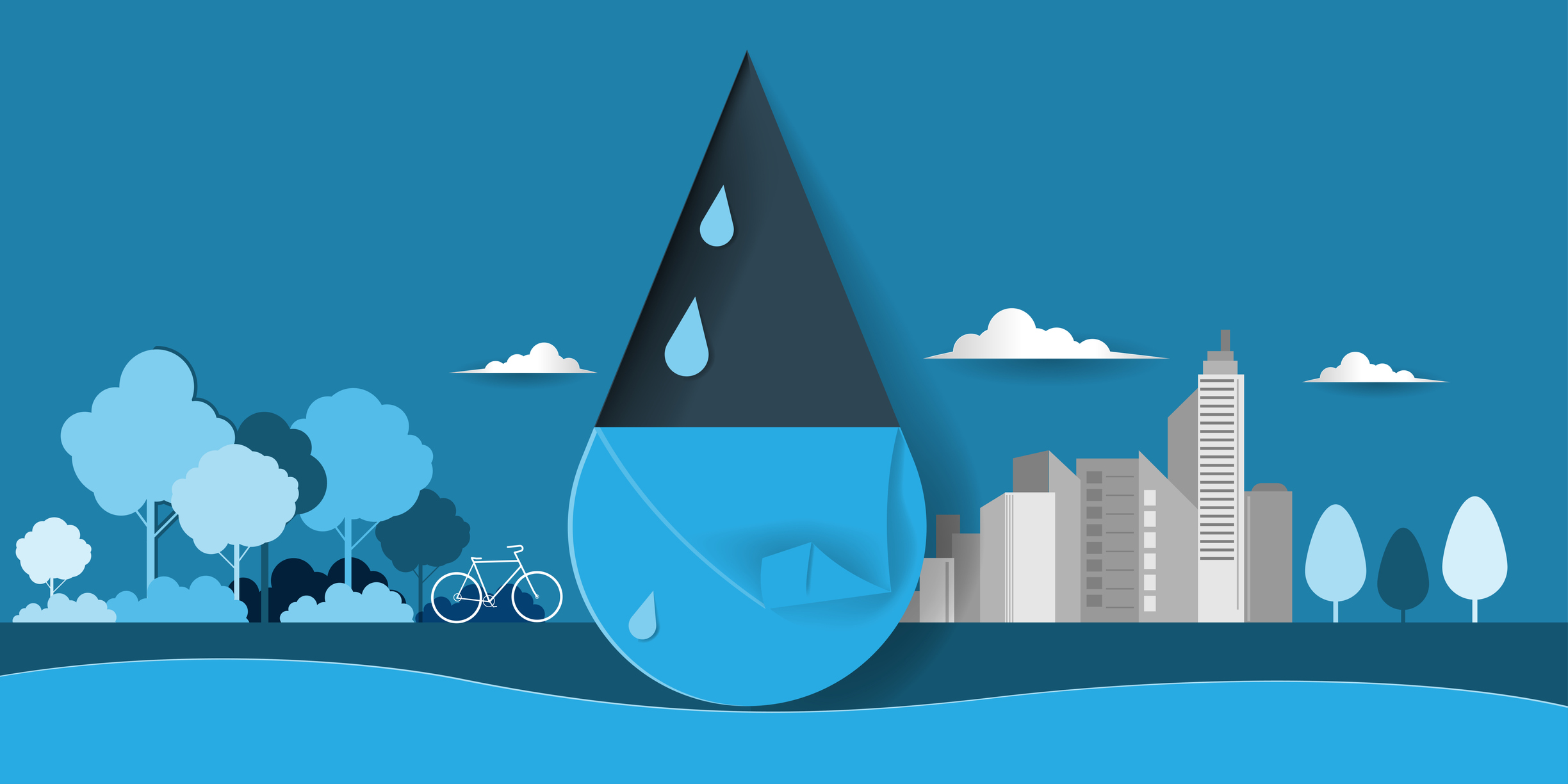
Gulp! Here’s a Water Bill Crisis in the Making with a Clarion Call for Digital Intervention
The tales of Cape Town and Chennai have been told countless times. These are the tales of a city as it counts down to ‘Day Zero,’ the worst-case scenario in the water availability spectrum. Challenges with water availability and distribution have captured millions of people's imagination, with public and private entities working to raise awareness among people, to do their bid and save water. But now, the brewing water crisis is taking another dimension. Especially in America, where it is set to burn a hole in people’s pockets. Here is the water crisis, morphing into unaffordable water bills, causing water poverty among millions.
The Burgeoning Water Poverty
Exclusive research, conducted by The Guardian, on 12 diverse cities in the U.S. reveals that water prices have increased by an average of 80 percent between 2010 and 2018, with more than two-fifths of residents in some cities living in neighborhoods with highly unaffordable bills. These unsettling facts emerging from the research unveil America’s expanding water poverty; caused by a myriad of varying and complex reasons - be it aging infrastructure, environmental cleanups, changing demographics, and climate emergency; which in turn is fueling the exponential price hikes in almost every corner of the country.
The water service affordability is a concern for U.S. cities, both large and small. With water rates often increasing by double-digit figures at the local level, bills for this essential service are increasingly outstripping households' ability to pay. This unaffordability has traditionally hit people at the bottom of the income pyramid; which is now creeping into households with moderate incomes. With federal funding for America’s aging water system plummeting and growing unaffordability; millions of homes are either disconnected or put into foreclosure every year.
As the situation deteriorates further, unaffordable water poses threat to individuals and the public health system. The inability-to-pay presents other concerns: one on the social front with households struggling to retain the essential service, another on the business front with water providers battling their inability-to-collect payments. There is also an adverse impact on the water quality: if people cannot afford to pay their bills, water providers can’t raise the money required for clean-ups.
Growth, we wish to avoid
Yes, the situation is dire, and as the research reveals, cities across the U.S are eyeing an upward trajectory for their water bills. This has been a historical trend. If the momentum continues, the bills will reach unprecedented levels in the next 10 years, throwing innumerable people into now what is called water-poverty. Here are what some cities are experiencing:
- In Cleveland, more than nine-of-ten (93%) of the low-income households will live with unaffordable water bills, representing 56% of Cleveland’s total population.
- In New Orleans, by 2030, 93% of the low-income population will live with unaffordable water bills, an increase from 73% in 2017. Water bills have already doubled over in the past decade, to $1,268 in 2018 – in a city where many rely on bottled water due to concerns about toxins – which means the poorest residents simply cannot afford to pay.
- San Diego is another city projected to have more than 80% of its low-income population living with an unaffordable water bill in 2030.
- In Austin, Texas, if prices in the city continue to go up at the current rate, more than four-fifths of low-income residents –could face unaffordable bills by 2030.
- In Tucson, Arizona, a drought-affected city, the number of low-income residents facing unaffordable bills doubled to 46% between 2010 and 2018 – as the average bill increased by 119% to $869.
Let’s throw some light on the ability-to-collect of water providers to collect payments. Intuitively, it will be impacted. For years, the providers have deferred maintenance and clean-up projects, inevitably leading to the present infrastructure and toxic water crisis. And this snowball effect is causing more than $6Bn worth of water lost annually to leaks. Both the actors- households and water providers are facing a seemingly indomitable situation.
Is there a solution?
The solution. Firstly, it is imperative to take cognizance of the bill crisis at hand. The second would be to take corrective measures. These measures will have to be wholesome, with households-water providers- governments- private players, all part of it.
Will digital platforms have a role to play? Most definitely.
To efficiently manage the growing scarcer and less reliable water resources, the dawn of the digital water economy will prove transformational and help set a new paradigm for urban water management. As the digital revolution continues to rage for other industries, water providers would also witness a positive impact as it gets swept up in a tide of 1s and 0s.
We all know and have seen that digital innovation has the potential to create innumerable opportunities. Whether it is by enabling better system-level decision making or improving future outcomes; which for water providers would be superior watershed management, improved utility operations, predictive maintenance, streamlined workforce planning, and enhanced customer service.
To realize these benefits, the next step would be for all the stakeholders to come together. Accelerate the adoption of these digital platforms. Transform the foundational elements of water services.
For households, this digital-driven transformation can take the shape of improved rate structures, reduced likelihood of bill shock, non-payment or cut-offs, better visibility into water usage, more payment arrangements to choose from, faster enrollment into saving programs, hassle-free query resolution, so on and so forth.
The Clocks’ Ticking. Tick. Tick.
Unaffordable water bill crisis is coming to the fore in the U.S. but might as well surface in other geographies.
To build a sustainable and secure water-future mandates acting now. And moving to the next generation of water service includes embracing digital solutions. These are not the surface-level solutions, instead the very backbone of the modern utility. The technology gurus correctly term these as part of the organizational DNA- interwoven with the physical infrastructure, business services, data management, customer relations, and everything else that makes up the day-to-day operations of a water provider. The key remains- Acting Now!
Let’s Solve Water, Together
No one can solve water alone. Yesterday it was water scarcity making headlines. Today it is water bills. And who can predict what the future has in store. But together, we can tackle each of these challenges head-on. And build resilience into our business ecosystem. At SEW, we are starting a dialogue and taking measures to engage, empower, and educate people to save water. With our innovative platforms, we are making sure that we equip water providers with the tools necessary to tackle the past-current-future challenges. Together, we can solve water and create a more sustainable world.
References:
The Guardian
www.theguardian.com/us-news/2020/jun/23/millions-of-americans-cant-afford-water-bills-rise


